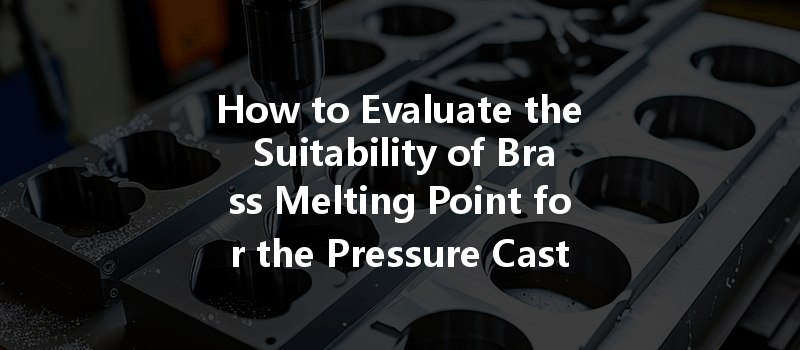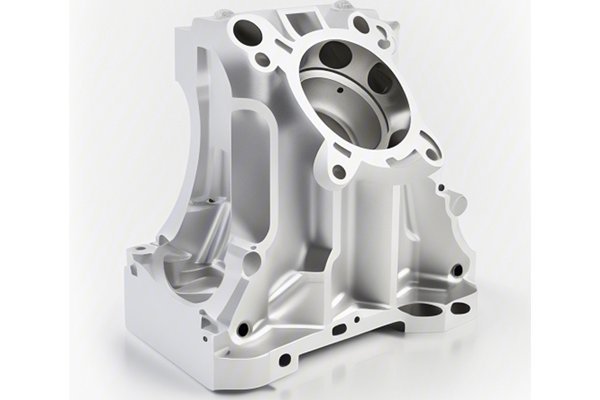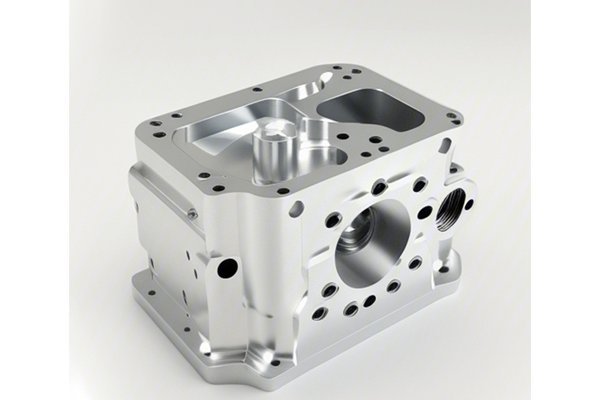Did you know that the melting point of a material can significantly influence the efficiency and quality of the manufacturing process? Brass, an alloy primarily composed of copper and zinc, has a melting point that can vary depending on its specific composition but typically ranges from 900 to 940 degrees Celsius. This information is crucial for engineers and manufacturers who rely on pressure casting processes to produce high-quality components. Understanding how the melting point of brass affects the pressure casting process can help ensure the successful production of complex and intricate designs, ultimately contributing to improved product performance and lower manufacturing costs.
In this exhaustive guide, we will explore the nuances of evaluating the suitability of brass melting point for the pressure casting process. We will provide detailed insights into the properties of brass, the pressure casting method, and the critical connection between melting point and casting quality. This blog will serve as a comprehensive resource for manufacturers, engineers, and anyone with a vested interest in metal casting.
Understanding Brass and its Melting Point
What is Brass?
Brass is an alloy formed by combining copper and zinc, although other elements such as tin, aluminum, and lead may also be added to improve specific properties. The alloy is well-known for its excellent machinability, corrosion resistance, and attractive appearance, making it popular in various applications, including plumbing fixtures, musical instruments, and automotive parts.
The Importance of Melting Point
The melting point of a material determines the temperature at which it transitions from a solid to a liquid state. For brass, this characteristic directly affects its malleability and formability during the casting process. If the melting point is not accurately understood and accounted for, manufacturers may face issues such as incomplete melting, poor fluidity, and defects in the final product.
Factors Influencing Brass Melting Point
The melting point of brass can be influenced by various factors, including:
The Pressure Casting Process
What is Pressure Casting?
Pressure casting is a manufacturing technique that involves forcing molten metal into a mold cavity under high pressure. This method is widely utilized for producing complex shapes and high-dimensional accuracy. Pressure casting is highly effective for materials like brass due to its ability to capture fine details and produce dense components with excellent mechanical properties.
Steps in the Pressure Casting Process
Advantages of Pressure Casting

Evaluating the Suitability of Brass Melting Point for Pressure Casting
The evaluation of brass melting point for pressure casting involves several critical considerations:
Understanding the specific alloy composition is essential for evaluating the melting point. Manufacturers should have accurate data regarding the percentage of copper and zinc employed, as well as any additional alloying elements.
Determining the optimal melting point for the pressure casting process requires conducting tests to identify the precise temperature range for the selected brass composition. Manufacturers can achieve this by conducting thermal analysis using techniques such as Differential Thermal Analysis (DTA) or Differential Scanning Calorimetry (DSC).
Precise temperature control during the melting process is essential. Using thermocouples or pyrometers ensures accurate readings of the molten brass temperature, preventing issues such as overheating or incomplete melting. Implementing automatic temperature control systems can further enhance consistency and reliability.
The fluidity of the molten brass is critical for capturing intricate details. Evaluating fluidity typically involves conducting tests where the brass is poured into small, rigorously designed molds to measure flow properties. Various factors, including temperature and the design of the ladle, can influence fluidity.
The solidification behavior of brass must also be examined, as it plays an essential role in determining the mechanical properties of the finished product. Analyzing the phase diagram of the selected brass alloy can provide insights into how different factors, such as cooling rates, impact solidification.
A systematic approach to testing for potential defects in pressure-cast brass components should be established. Common defects can include porosity, inclusions, and shrinkage cavities. Employing Non-Destructive Testing (NDT) methods, such as ultrasonic testing or X-ray inspection, can help identify these issues in the final product.
Case Studies
Case Study 1: Brass Plumbing Fittings
A manufacturer producing brass plumbing fittings faced issues related to inconsistent melting, leading to poor quality and rejection of finished products. By following the evaluation steps outlined above, including determining the optimal melting point and controlling the thermal environment, the manufacturer successfully reduced defects and improved overall product quality.
Case Study 2: Brass Musical Instrument Components
A company specializing in brass musical instruments aimed to achieve precision in their components. By focusing on the fluidity of the brass during melting and using high-pressure casting techniques, they were able to create highly intricate designs while maintaining sound quality and aesthetic appeal.
In summary, the evaluation of the brass melting point’s suitability for the pressure casting process is a multifaceted task that encompasses multiple factors, from composition and temperature control to fluidity and solidification behavior. By understanding and effectively managing these aspects, manufacturers can produce high-quality brass components that meet stringent specifications and performance requirements.
The process doesn’t simply end with casting; continuous assessment and improvement are essential to maintain competitiveness in the industry. This blog highlights the importance of evaluating brass melting points, encouraging manufacturers to invest time and resources into refining their casting processes for optimal results. Ultimately, having this deep understanding of brass and its application in pressure casting can lead to better-quality products and lower production costs, solidifying a manufacturer’s position in a competitive market.
Consider the melting point not merely as a numeric value, but as a crucial parameter that acts as a gateway to success in the realm of brass casting. Whether you are involved in engineering, manufacturing, or simply fascinated by the intricacies of material science, the implications of this topic are worth exploring in greater depth. Happy casting!






